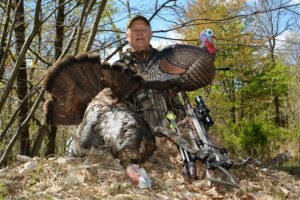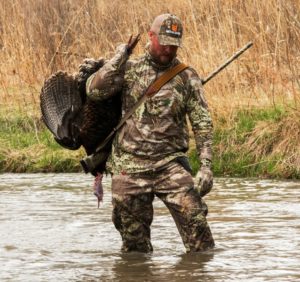Wild turkeys go through transitional phases in all parts of the country. Harold Knight and David Hale publicized these changes among wild turkeys a decade ago and it’s one of the best ways to understand wild turkey behavior. Much of the USA will experience an “early spring” this year due to a mild winter and an early onset of spring temperatures. This warmer start to the year will affect turkey transitions as well and you can expect birds to behave differently than they did last year on the same date.
This system of analyzing turkey phases is critical if you plan to hunt turkeys out-of-state. Unless you live on the state line, conditions will probably differ from how your home birds behave. Knight and Hale developed a map that showed the various phases across the country, but once you understand the transitions, you’ll quickly know how to adjust your hunting tactics.
As you hear other hunters or guides discuss the turkey season, you’ll hear them speak of gobblers being “henned-up” or other descriptive term. Once you determine the transition phase local turkeys are in, you can adjust your tactics to sit longer, move more, call less, and other adjustments that help match your hunting style with the behavior of local birds. Gobblers will behave differently as the breeding season progresses. Early on, gobblers compete to breed hens. In mid season, females begin to nest and suddenly gobblers are left alone in the woods. Finally, in late season hens are incubating and hunting pressure has most gobbler shut down. Here’s a plan for all phases of the season.
With hunting wild turkeys, it’s not always about how good you can call. Don’t get me wrong, you definitely need to master true-hen sounds with all the calls you plan to use. However, you don’t necessarily have to be a world-champion caller to consistently punch your tags. In fact, I’ve been around some competition callers in the past that could absolutely spit feathers, but often struggled on the stage that really counts – in the woods. The truth is woodsmanship skills coupled with an in-depth knowledge of wild turkey behavior is basically what separates a turkey hunter from a turkey harvester.









![The Best Deer Camp Chili [VIDEO] Deer Chili Ingredients, Tomatoes, Chili Spices](/wp-content/uploads/2015/10/Deer-Chili-Deer-Camp-Recipe-218x150.jpg)








![How to Call Elk Early in the Season [VIDEO]](/wp-content/uploads/2016/08/byers003-218x150.jpg)

![043c175caf2e9f128cd1c4a8f96a5bfe[1]](/wp-content/uploads/2017/03/043c175caf2e9f128cd1c4a8f96a5bfe1.jpg)




![Idiots Disturb Hunter: How Would You Have Handled It? [VIDEO]](/wp-content/uploads/2015/10/DSC00110-e1474487693878-100x70.jpg)
![Albino Buck Shocked to Shed His Antlers [VIDEO]](/wp-content/uploads/2015/10/AlbinoDeer-100x70.jpg)